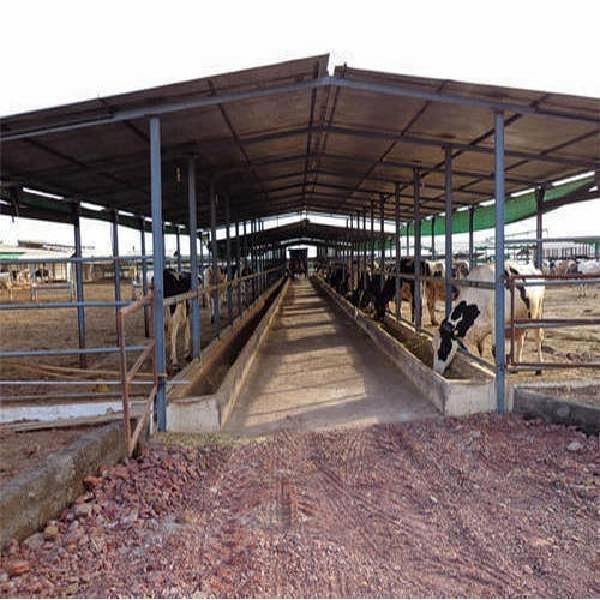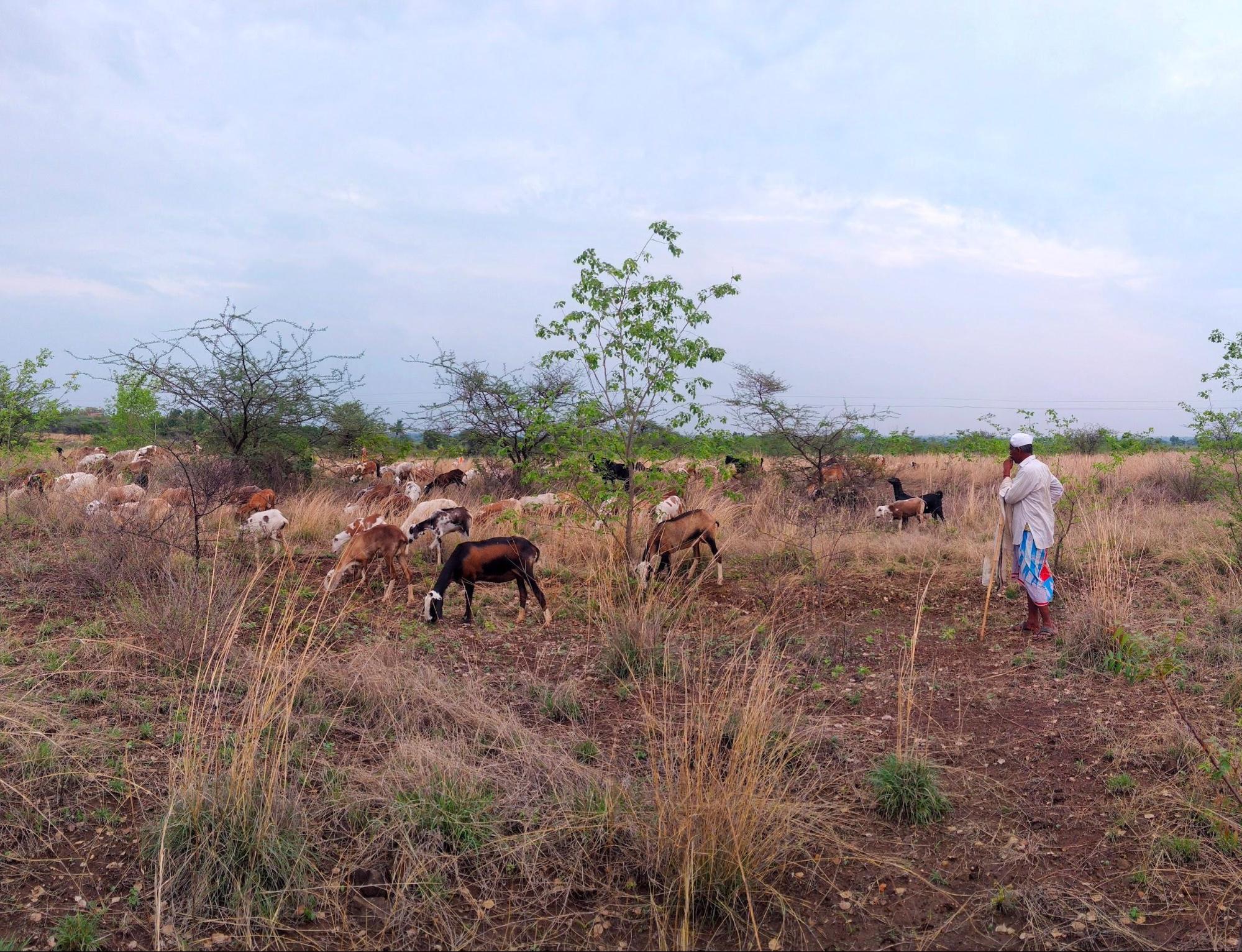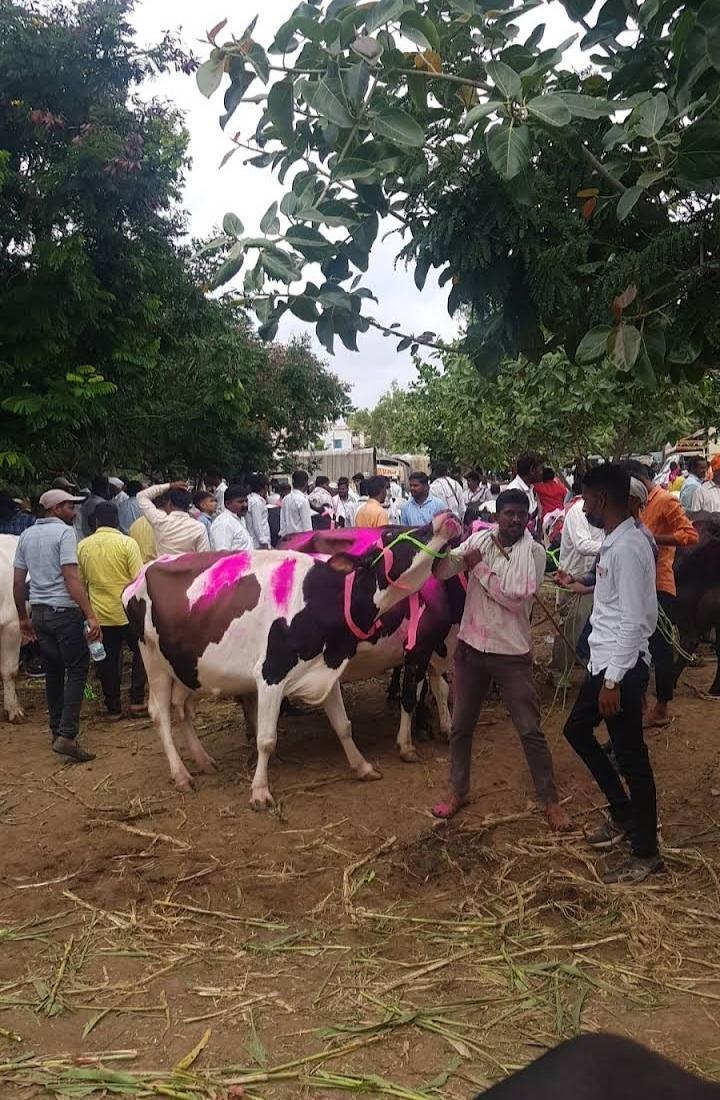Contents
- Livestock
- A. Livestock Numbers
- B. Artificial Insemination
- Dairy
- A. Annual Milk Collection
- B. Average Milk Collected Per Day
- C. Dairy Cooperative Societies
- D. Cold Storage Units
- E. Cold Storage Capacity
- Community-Owned Land for Pastures/Grazing
- Pastoralist Communities in the District
- Veterinary Care
- A. Veterinary Facilities
- B. Type of Veterinary Facilities
- Important Livestock Markets
- Fisheries
- A. Area for Fisheries
- B. Lakes, Ponds, or Reservoirs Suitable for Fishing
- C. Length of Rivers
- D. Groundwater Fish Production
- E. Fish Seeds Used
- F. Price Received by Producers for Fish Caught
- G. Fish Business Cooperatives
AHILYANAGAR
Livestock & Fisheries
Last updated on 6 November 2025. Help us improve the information on this page by clicking on suggest edits or writing to us.
Livestock
Historically, cowsheds (locally known as Ghavan) were single-sided, meaning they were fenced against the wall on one side. Today, double barns are constructed, featuring cowsheds on both sides with a gap in between for walking and feeding purposes. Cattle and buffalo are tied on either side of this space.
Additionally, milking practices have evolved; cows were once milked by hand, but now machines are commonly used for milking. While some areas still rely on manual milking, machines are utilized where higher milk yields are required.


In addition to the changes mentioned, a new practice known as the "free range system" has emerged, where animals are allowed to roam freely.
Dairy
Community-Owned Land for Pastures/Grazing


Residents of the city often have farmland in the village, which local people utilize to graze their goats, sheep, cows, and buffaloes. Additionally, some of this land may belong to the government and lack a designated owner. Although people do not have permission to graze their animals on these lands, many still do so without authorization. This practice is not limited to residents; migrants also rely on these lands for grazing their livestock
Pastoralist Communities in the District
The pastoralist communities in Ahilyanagar primarily include the Dhangars, who are predominantly found in Jamkhed taluka and Khed village. They traditionally rear sheep and goats, migrating seasonally in search of grazing lands and water sources.
Their migratory patterns have been increasingly restricted due to urbanization and the loss of grazing lands. As a result, many young Dhangars are moving away from traditional pastoralism in search of alternative livelihoods.
Veterinary Care
The Ahilyanagar district has a large number of private veterinary clinics compared to government-run veterinary hospitals.
Some veterinary hospitals and clinics in the district include:
- Pashuvaidyakiya Sarvachekitsalay Building, located on Nagar Station Road in Wadiya Park, Ahilyanagar - 414001, near the Old Bus Stand and Imperial Chowk.
- Nevasa Veterinary Hospital in Nevasa, Ahilyanagar, 414603.
- Taluka Veterinary Minipolyclinic in Rahuri, 413705.
Farmers find it more convenient to call private practitioners to their farms, as opposed to transporting their animals to the often distant and under-equipped government veterinary hospitals.
Important Livestock Markets
Ahilyanagar district hosts several significant livestock markets, with the Kashti Bull Market in Shrigonda taluka being the largest. This market specializes in trading bulls, goats, cattle, and buffaloes and operates every Saturday, attracting numerous farmers and traders.
Other notable livestock markets in the region include:
- Ghodegaon Market: One of the largest livestock markets in Ahilyanagar, Ghodegaon Market, is held weekly on Wednesdays.
- Loni Market: Located in Loni village of Rahata taluka, this market is also organized weekly on Wednesdays.
- Rashin Market: Situated in Karjat taluka, Rashin Market deals primarily in cattle, goats, and sheep. Like the others, it operates weekly and draws traders from surrounding areas.
- Sangamner Market: This market is recognized as one of the largest in the district and focuses on cattle, goats, and sheep. It also operates weekly and attracts a diverse group of farmers and traders.

Fisheries
The fisheries sector in Ahilyanagar district has long been supported by its rivers and reservoirs. According to the Ahmadnagar Gazetteer of 1976, the district had around 15 irrigation tanks, of which Bhandardara, Musalwadi, and Visapur were perennial water bodies considered suitable for fisheries development. These water resources naturally supported a variety of fish species, including Kolshi, Panghat, Dandwat, Alkut, Tambir, Rohu, Mrigal, Catla, and Ambali, which belonged to the carp family. Among the catfish species, Shivda was commonly found. Other species included Muri from the loach family, Murrel from the snake-headed fish group, and Wambat, a type of spiny eel.
Fishing communities in the district primarily consisted of Pardeshi Bhois and Kahars. Today, fisheries continue to be an important economic activity, particularly along the Pravara River, a crucial freshwater resource and a tributary of the Godavari River. The river supports subsistence fishing and is home to 17 fish species, primarily from the Cypriniformes order. However, challenges such as pollution from urbanization and agricultural runoff pose threats to its fish diversity.
Another major water body is the Bhandardara Reservoir, established in 1910 and spanning approximately 1,822 hectares. It contributes significantly to the local fishery economy, with an annual fish yield of about 21.23 tons, though a large portion consists of trash fish. The reservoir is home to Indian and exotic carps, which remain vital to the district's fisheries sector.
Last updated on 6 November 2025. Help us improve the information on this page by clicking on suggest edits or writing to us.